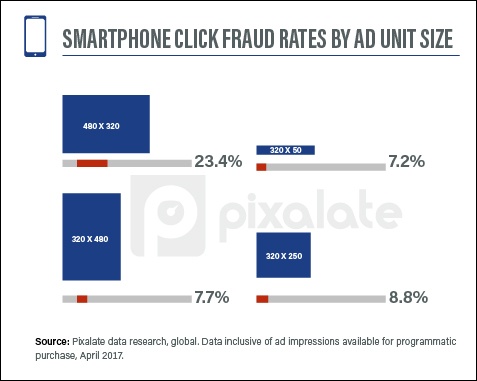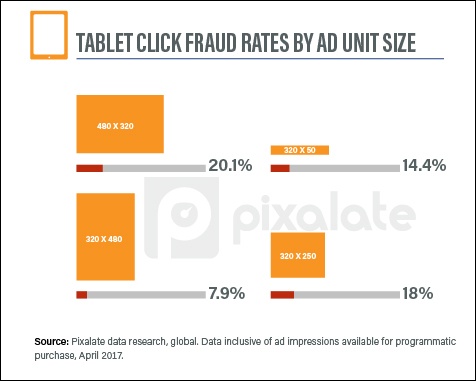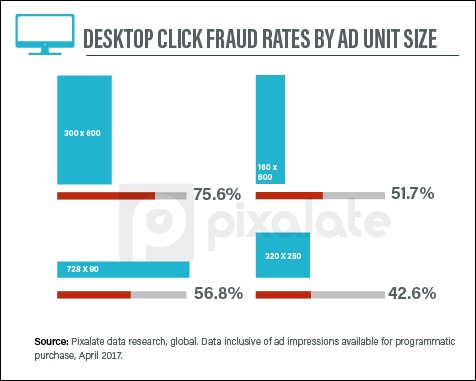
Our recent series of blog posts on click fraud in programmatic has established that click fraud is a growing problem across devices — smartphones, tablets, desktops, and event Connected TVs/OTT — and channels, including video and display.
But within those devices and channels, which ad units are fraudsters targeting most often? Pixalate examined a few of the most common ad units bought and sold via programmatic on desktops, smartphones, and tablets to answer the question.
When it comes to some of the most popular ad unit sizes on smartphone devices, fraudsters are clearly drawn to one size in particular: the 480x320 unit.


Interestingly, click fraud rates for the 320x250 and 320x50 ad units were roughly 2x higher on tablets compared to smartphones. However, the click fraud rates on the 320x480 and 480x320 units were roughly equal on both mobile devices.
For three of the most popular desktop ad unit sizes traded via programmatic, over half of the clicks they receive are fraudulent.

Click fraud rates across the most popular desktop ad unit sizes were significantly higher than click fraud rates on the most popular smartphone and tablet ad units. Overall, click fraud is a little higher on desktops than it is on mobile devices, but as noted above, it is a growing problem across all devices and screens.
*By entering your email address and clicking Subscribe, you are agreeing to our Terms of Use and Privacy Policy.
These Stories on Mobile
*By entering your email address and clicking Subscribe, you are agreeing to our Terms of Use and Privacy Policy.

Disclaimer: The content of this page reflects Pixalate’s opinions with respect to the factors that Pixalate believes can be useful to the digital media industry. Any proprietary data shared is grounded in Pixalate’s proprietary technology and analytics, which Pixalate is continuously evaluating and updating. Any references to outside sources should not be construed as endorsements. Pixalate’s opinions are just that - opinion, not facts or guarantees.
Per the MRC, “'Fraud' is not intended to represent fraud as defined in various laws, statutes and ordinances or as conventionally used in U.S. Court or other legal proceedings, but rather a custom definition strictly for advertising measurement purposes. Also per the MRC, “‘Invalid Traffic’ is defined generally as traffic that does not meet certain ad serving quality or completeness criteria, or otherwise does not represent legitimate ad traffic that should be included in measurement counts. Among the reasons why ad traffic may be deemed invalid is it is a result of non-human traffic (spiders, bots, etc.), or activity designed to produce fraudulent traffic.”

